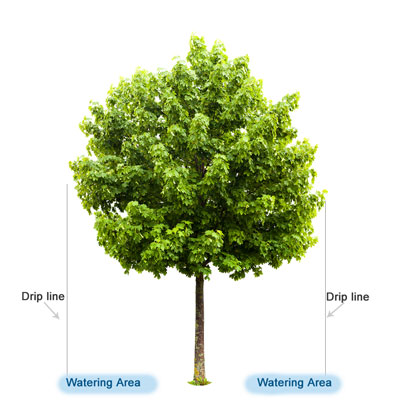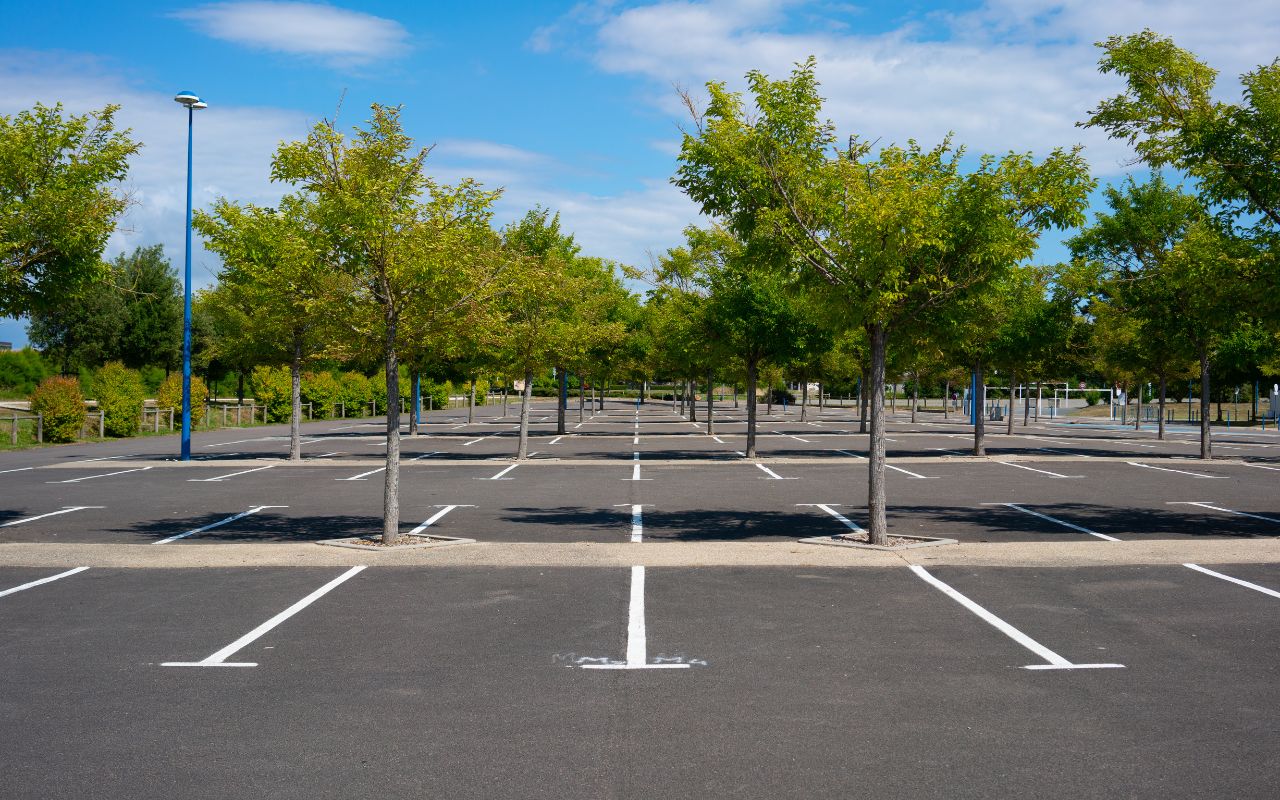Here in northern Virginia, it’s not unusual to see summer temperatures over 100F, and even higher if you consider the heat index.
At those temperatures, people start to wilt – and so do trees. In fact, trees can experience heat stress that not only makes them look bad, but also makes them more susceptible to insect and disease problems. Damaged tree trunks or branches are less able to heal because the tree is using all its energy just to stay alive in hot, dry weather.
As summer arrives and temperatures rise above 90F, pay particular attention to your trees. Early identification and treatment of heat stress go a long way toward helping them recover.
In this article, we will go over the signs of heat stress in trees and some tips on how to protect them during extreme summer heat.

What Is Heat Stress in Trees?
In a nutshell, heat stress occurs when a tree loses water faster than it can replace it.
Trees absorb water from the soil through their roots, as well as from the air through leaves, branches, and trunks. That water is circulated throughout the tree and then evaporated into the air through a process called transpiration (think of it like sweating in people).
While this process generally works very well to keep a tree healthy and hydrated, high heat (especially dry heat) puts transpiration into overdrive, causing the tree to lose more water, more quickly. In fact, a large tree can lose as much as 100 gallons of water on a hot day.
The situation is made even worse when there hasn’t been much rain lately (or not enough irrigation) so there isn’t enough moisture in the soil for the tree to absorb. Add in windy conditions that cause even faster evaporation of moisture from leaf surfaces, and the tree quickly starts to suffer from heat stress.
Signs of Heat Stress in Trees
Many symptoms of heat stress in trees look similar to signs of disease or drought so if you’re not sure, it’s best to call in a qualified tree care professional.
Here are some of the most common signs that a tree is suffering from heat stress:
- Wilting leaves are typically the first thing you’ll notice. As the tree becomes more stressed, stems and branches can start to droop.
- Irregular yellowing of interior leaves or needles
- Failure to produce healthy-looking new growth, making the tree canopy look sparse
- Rust-colored spots or bumps on leaves
- Scorching around leaf edges
- Sap oozing from the trunk, attracting ants or beetles
- Dropping leaves
How to Protect Your Trees in Summer

Water trees around the drip line, not up against the trunk.
Now you know that your trees can suffer when the heat is high and the humidity is low, here are a few ways you can protect your trees from heat stress.
Properly Water Your Trees
The best thing you can do for your trees is to make sure they’re getting the right amount of water. Water deeply using drip irrigation, a soaker hose, or by running a garden hose on a low flow. Don’t use sprinklers as they don’t get the water deep enough into the soil where tree roots are found.
Make sure to water at the drip line, not right up against the tree trunk (roots are not found right around the trunk so water is wasted there). Tree roots are found as far out as the canopy (the edge of the canopy is referred to as the “drip line”) so that’s where you need to water to ensure that the entire root system receives the water it needs.
If a tree is two years old or less, assume it might need more water during dry, hot periods. Otherwise, check the soil around your tree before choosing to provide extra water. Sometimes, too much water adds to the tree’s stress or chance of disease by “drowning” the roots (roots need oxygen, not just water).
Remove Broken, Dead, or Diseased Branches
Although summer isn’t a good time to do major pruning on your trees, do remove any dead or dying branches. This will help prevent infestation by wood-boring insects that could further stress the tree.

Consider the Area Around and Below Your Trees
What happens in the tree canopy (the upper branches and leaves of a tree) begins with the roots and your soil. Watering, as mentioned above, is the first part of keeping your tree cooler and hydrated, but there are other things to keep in mind.
If your tree or trees are near a sidewalk, driveway, or other paved or dark surfaces, the temperatures radiating off of that dark surface can be much higher than the temperature around a planting bed or grassy lawn.
Trees near those areas might need a little extra TLC to help them survive the summer heat.
Placing organic mulch around a tree (while making sure the mulch doesn’t touch the tree’s trunk) can regulate the soil temperature, reduce water evaporation, and add needed nutrients to the soil.
Be Aware of any Changes to Your Tree
Keep a close eye on any trees exhibiting signs of heat stress. As temperatures cool (for example, in the evening) the leaves should perk up. If they don’t, and you’re sure you’re providing the appropriate amount of water, then it’s probably time to call in the tree care pros for an evaluation.
Get helpful tips, local news, inspiring stories, and more delivered right to your inbox every month. Don't miss another issue - join today!





